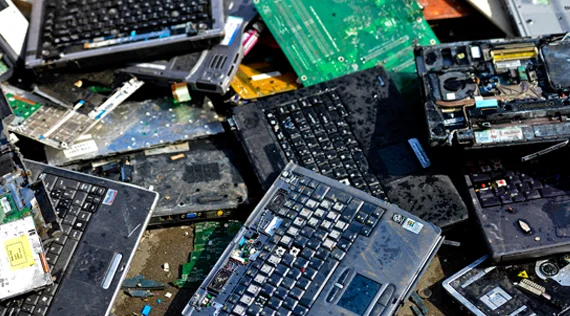
SEATTLE (Scrap Monster): E-waste poses a significant threat to environmental health, particularly concerning water supplies. The rising threat of e-waste in water systems can be attributed to several factors:
Toxic chemicals: E-waste often contains hazardous materials such as heavy metals (lead, mercury, cadmium) and chemicals (brominated flame retardants). When e-waste is improperly disposed of, these substances can leach into the soil and eventually contaminate groundwater and surface water.
Improper disposal: A growing amount of electronic devices are discarded in landfills instead of being recycled. Inadequate recycling facilities and illegal dumping exacerbate the problem, leading to the release of toxic substances into the environment.
Increased consumption: The rapid advancement of technology leads to shorter product lifespans and increased demand for new devices. This trend contributes to the growing volume of e-waste, which can overwhelm existing waste management systems.
Environmental impact: As e-waste breaks down, it can release toxins into the environment, leading to pollution of rivers, lakes, and aquifers. Contaminated water can affect ecosystems and pose health risks to humans and wildlife.
Health risks: Communities near e-waste dumping sites may face serious health risks due to contaminated water supplies. Long-term exposure to contaminated water can lead to various health issues, including neurological problems, developmental delays in children, and increased cancer risks.
Regulatory challenges: Many countries lack stringent regulations regarding e-waste management, leading to insufficient controls on disposal practices. This regulatory gap allows for the continued contamination of water supplies.
Global trade: E-waste is often shipped from developed to developing countries, where regulations may be laxer. This practice not only increases the risk of environmental contamination but also exposes vulnerable populations to health hazards.
Addressing the rising threat of e-waste in water supplies requires a multifaceted approach, including better recycling practices, public awareness campaigns, stricter regulations, and international cooperation to manage e-waste globally. Implementing effective e-waste management systems and encouraging responsible consumer behavior are essential steps toward mitigating this environmental challenge.
What are sources of e-waste in water supply?
E-waste can contaminate water supplies through several sources and pathways, primarily stemming from improper disposal and inadequate recycling practices. Here are some key sources of e-waste pollution in water supplies:
Landfills: When electronic devices are discarded in landfills, toxic substances within them — like lead, mercury, and cadmium — can leach into the soil and groundwater. Rainwater can facilitate this leaching, leading to contamination of nearby water supplies.
Improper recycling: Informal or unregulated recycling operations often lack the necessary safeguards to handle e-waste safely. During the dismantling process, harmful materials can be released into the environment, contaminating local water sources.
Incineration: Burning e-waste, a practice used in some regions to recover metals, can release toxic ash and gases. If the byproducts are not managed properly, they can contaminate nearby waterbodies through runoff or atmospheric deposition.
Dumping in waterbodies: In some cases, e-waste is directly dumped into rivers, lakes, or oceans. This not only leads to immediate contamination of water but also poses long-term risks to aquatic ecosystems and human health.
Manufacturing processes: During the production of electronic goods, wastewater generated from manufacturing processes can contain hazardous substances. If not treated properly, this wastewater can find its way into local water supplies.
Soil contamination: E-waste that is improperly disposed of in soil can lead to the leaching of harmful chemicals into groundwater. This contamination can subsequently affect drinking water sources.
Consumer habits: Consumers often dispose of electronic devices improperly, contributing to the e-waste problem. When people throw away old electronics instead of recycling them, they inadvertently increase the chances of water contamination.
Addressing these issues requires robust e-waste management strategies, including public awareness campaigns, proper recycling programs, and stricter regulations on e-waste disposal.
Courtesy: www.wateronline.com



| Copper Scrap View All | |
| Alternator | 0.41 (0) |
| #1 Copper Bare Bright | 4.29 (0.04) |
| Aluminum Scrap View All | |
| 356 Aluminum Wheels (Clean) | 0.82 (0) |
| 6061 Extrusions | 0.72 (0) |
| Steel Scrap View All | |
| #1 Bundle | 360.00 (0) |
| #1 Busheling | 380.00 (0) |
| Electronics Scrap View All | |